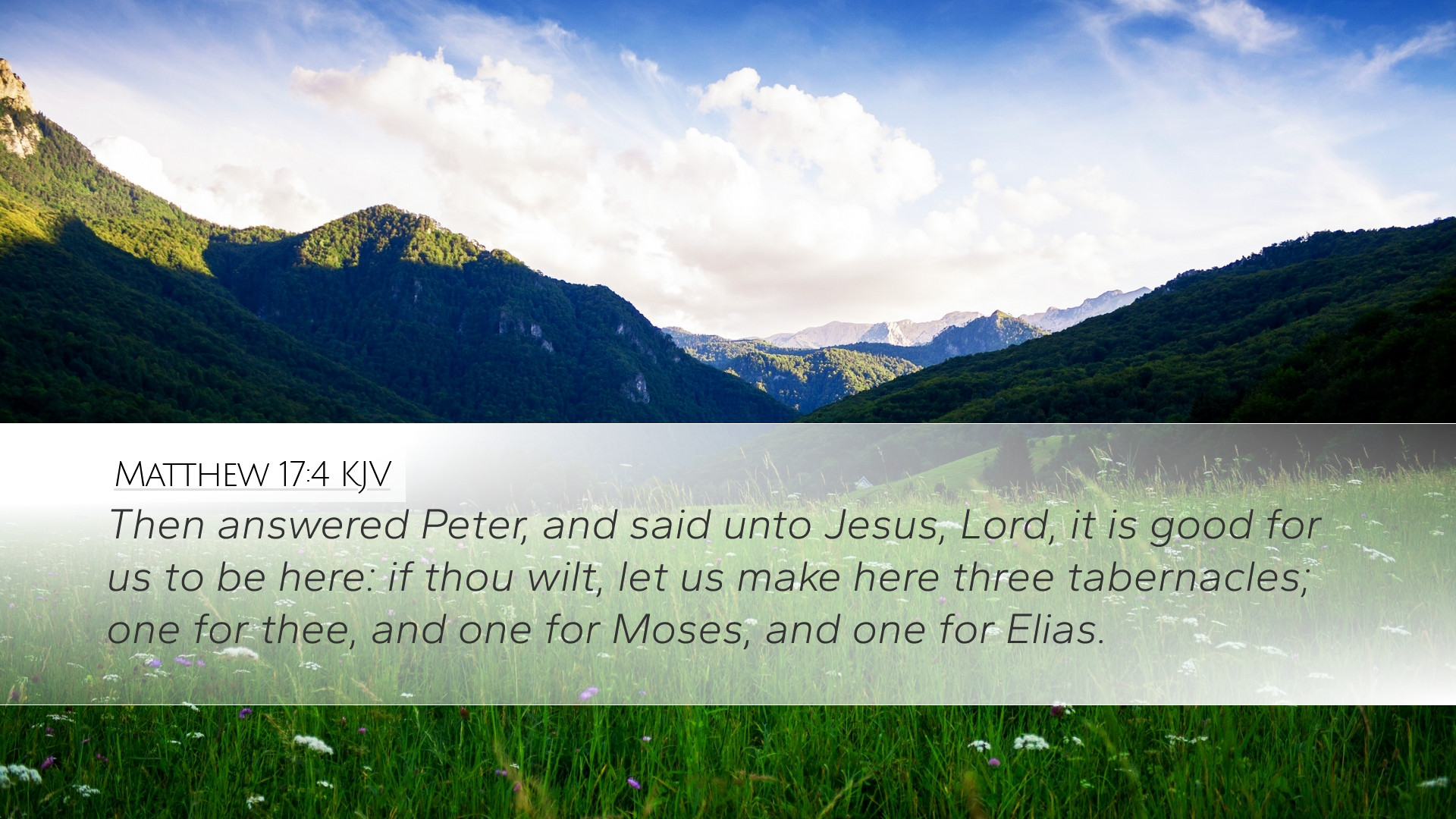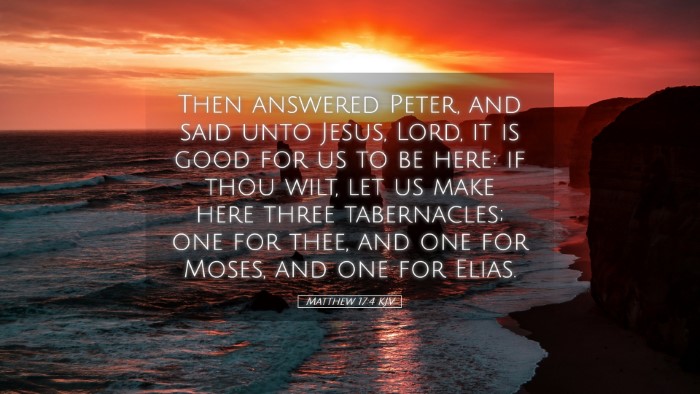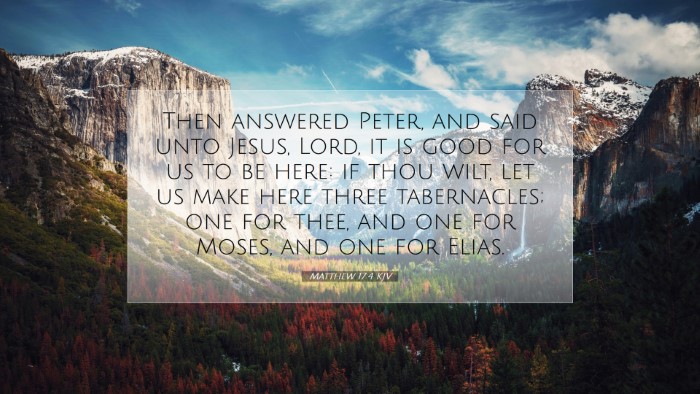Commentary on Matthew 17:4
Verse Reference: Matthew 17:4 - "And Peter answered and said unto Jesus, Lord, it is good for us to be here: if thou wilt, let us make here three tabernacles; one for thee, and one for Moses, and one for Elias."
Introduction
This verse is part of the account known as the Transfiguration of Jesus, where He is revealed in divine glory in the presence of Peter, James, and John. This moment is profound in its theological implications and provides insight into the early understanding of Christ's nature, His relationship with the law and the prophets, and the significance of worship. The commentary below draws from the insights of Matthew Henry, Albert Barnes, and Adam Clarke to enhance our understanding of this verse in the context of Scriptural narrative.
Peters’s Response
Peter's Initiative: Peter's reaction, as recorded in this verse, reflects a natural human response to an overwhelming spiritual experience. Henry notes that Peter, overwhelmed by the magnificence of the event, suggests making tabernacles. This indicates a desire to prolong the experience of divine glory and suggests an incomplete understanding of the full implications of what he had witnessed.
Theological Implications
- Divine Presence: Peter's proclamation, "it is good for us to be here," indicates a significant theological realization of being in the presence of God. It emphasizes the concept of dwelling with the Lord, a theme prevalent throughout Scripture.
- Connection with Law and Prophets: By suggesting the construction of three tabernacles—one for Jesus, one for Moses, and one for Elijah—Peter inadvertently places Jesus on the same level as these monumental figures in Jewish history. Clarke argues that while Peter acknowledges the importance of Moses and Elijah, he misses the crucial point that Jesus fulfills and surpasses the law and the prophets.
- Human Incomprehension: Barnes points out that Peter's instinct to create shelters reflects mankind's tendency to confine the divine experience. It suggests a limitation in fully grasping the majesty of God. Peter’s proposal reveals a misunderstanding of the temporality of such divine revelations while ignoring the requisite humility in response to Christ's glory.
Worship and Response
Peter's desire to build tabernacles can also be seen as an act of worship. In the Jewish tradition, tabernacles hold significance as places of dwelling and communion with God, especially emphasized during the Feast of Tabernacles. Henry notes that Peter genuinely intended to honor Jesus and his companions according to the customs of his faith. However, the act of worship proposed by Peter was conditional and bound within earthly parameters, which the Father’s voice later corrects.
Correction from God
Subsequent verses reveal a divine response to Peter, with God declaring, "This is my beloved Son, in whom I am well pleased; hear ye him." This proclamation from the cloud serves as a stark reminder that Jesus is indeed the ultimate revelation of God—above all prophets and the law. Clarke emphasizes that God redirects attention from Moses and Elijah to Jesus alone, establishing the need to listen to Him as the authoritative voice in matters of faith and practice.
Takeaways for Pastors and Theologians
- Listening to Jesus: The divine instruction to "hear Him" reminds church leaders and theologians of the necessity of centering teachings and practices on Christ. In a world filled with myriad voices, the call to prioritize the words of Jesus remains paramount.
- Appreciating Divine Moments: Like Peter, contemporary believers may encounter profound spiritual moments that call for reflection. Understanding our human tendency to respond with actions or rituals can prompt leaders to guide their congregations in seeking a deeper understanding of such experiences.
- The Role of Community: Peter's desire to build shelters speaks to a communal longing in worship. Leaders can glean insight into fostering environments that facilitate encounters with the divine, yet with the understanding that these moments are rooted in God's presence, not in our constructs.
Conclusion
Matthew 17:4 serves as a pivotal moment not only in the life of Peter but also in the revelation of Jesus Christ as the preeminent figure of faith. The combined insights from public domain commentaries shed light on the weight of Peter's statement, the implications of divine correction, and the essential call to honor Christ above all. In this acknowledgment, pastors, students, and scholars are invited to engage with the text, understanding its rich theological depth and its implications for worship and the discipleship journey.


